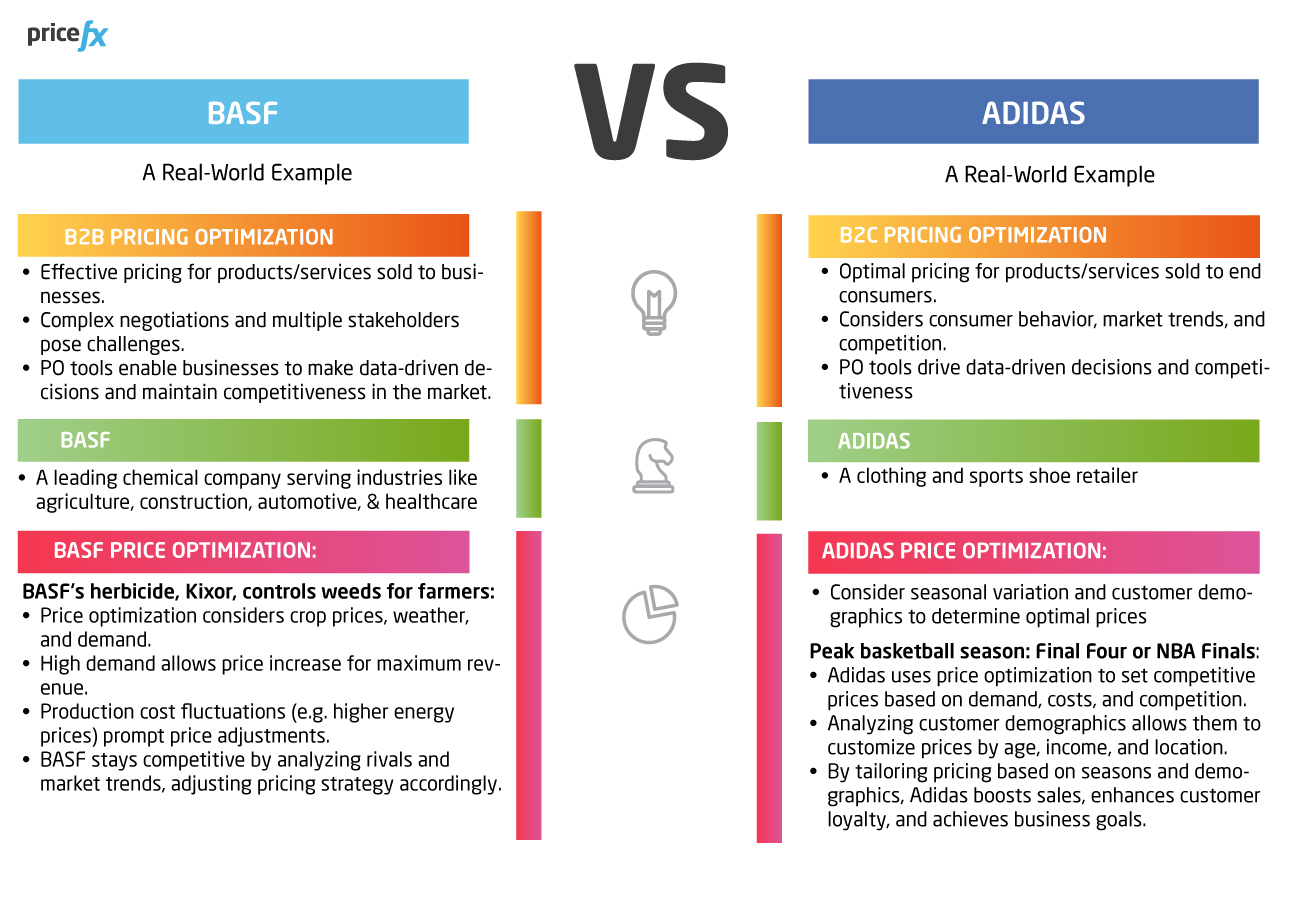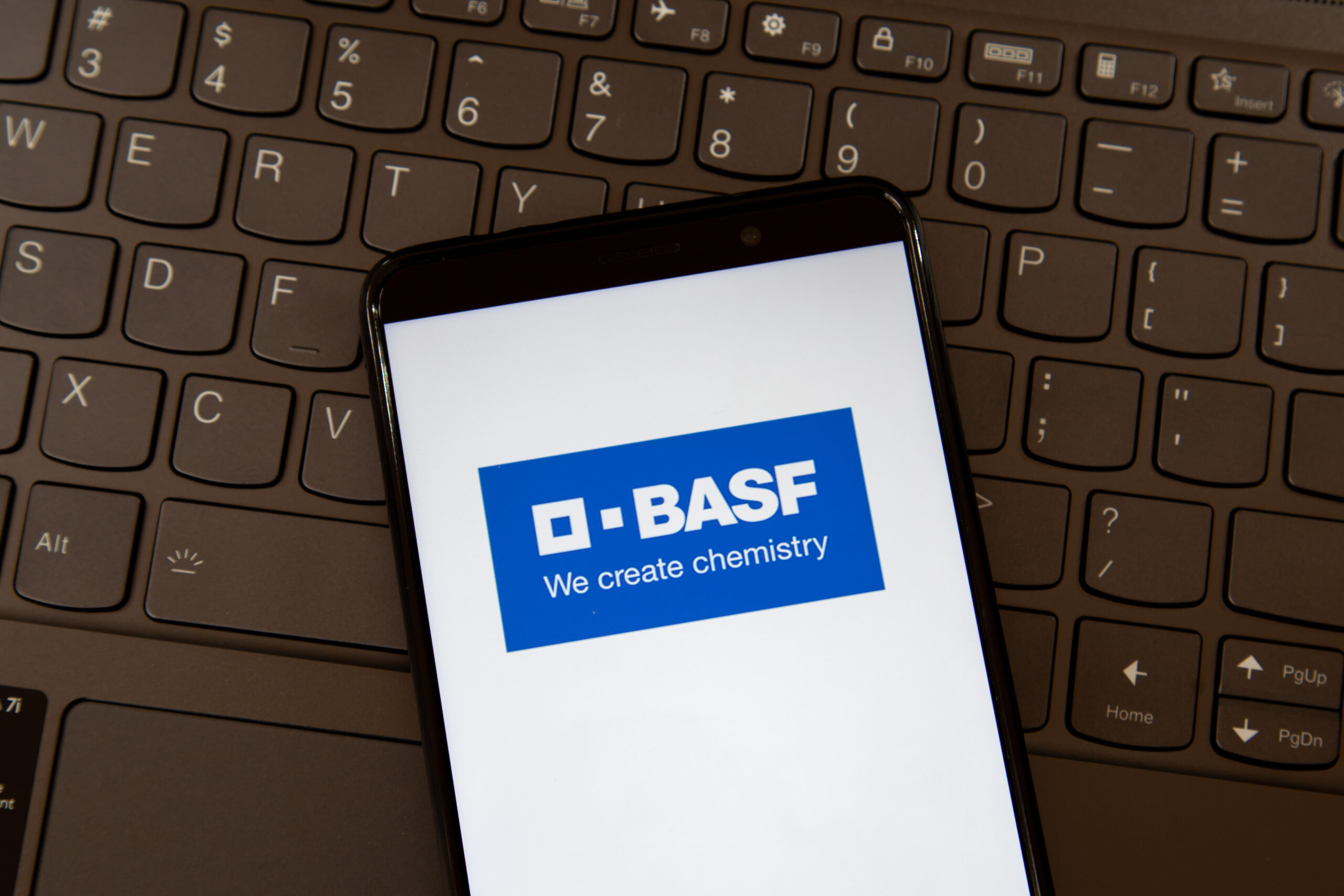If your business is struggling to find the right prices for your products, it can be a significant factor that affects your bottom line. For example, imagine you manufacture car spare parts for sale globally, and you are having trouble determining the right prices for your products. You might be undercharging for your items in some jurisdictions and overcharging in other regions. For undercharging it can mean lost profits, or for overcharging, it can lead to diminished sales and dissatisfied customers. Price optimization can solve these problems for your business by utilizing data-driven analysis to determine the optimal price points for your products. By taking into multiple factors such as customer demand, competition, and production costs, price optimization can help you set prices that maximize profitability while keeping your products competitive in the market. This can lead to increased sales, better customer satisfaction, and improved financial performance for your business.
At Pricefx, we have more than 12 years of experience in providing price optimization software to organizations just like yours as a part of a total pricing software solution. Consequently, we are perfectly placed to look at price optimization software technology, how it is making Excel a footnote in the pricing history books, and how price optimization software combines with an award-winning suite of 360-degree pricing solutions to ensure the best possible price for every single product and customer.
Let’s get started by firstly defining exactly what price optimization is before examining how it works and why you should care about the potential positive business outcomes that harnessing the innovative technology can offer to both B2B and B2C companies.
What is Price Optimization?
Price optimization is the practice of using data and analytical techniques to determine the optimal price for a product or service. The process involves analyzing a wide range of factors, including market trends, customer behavior, production costs, and competitive pressures. By analyzing this information, businesses can identify the price point that will maximize revenue and profitability while also meeting customer demand.
The goal of price optimization is to find the right balance between pricing a product or service to achieve your company objective.
Price optimization can be a complex process, but it is a crucial component of any successful pricing strategy for businesses that want to stay competitive and maximize their profits.
By considering customer data and analytics, businesses can make informed decisions about pricing and remain competitive in the market. What’s more, with the help of predictive analytics, businesses can better understand their customers and their needs, allowing them to make better pricing decisions and stay ahead of their competitors.
Why Does Price Optimization Matter & Why Should You Care?
Price optimization matters because it can have a significant impact on a company’s bottom line.
Why should you care? – Pricing decisions can make or break a company, as the price of a product or service is one of the most critical factors that customers consider when making purchasing decisions. To understand exactly why even a seeming meaningless 1% increase in your prices can add 10 times that to your company’s bottom line, check out this video on the Power of the 1% in pricing:
Learn More Here How a Small Percentage Can Make a Pricing Difference
A well-executed price optimization strategy can help businesses achieve several benefits, such as:
- Increased Pricing Agility: Price optimization can transform a pricing process that can take as long as weeks or months and whittle it down to days or even hours. When internal or external factors change affecting your pricing, you can react instantaneously.
- Increased Revenue: By identifying the optimal price point for a product or service, businesses can maximize revenue and profitability. A well-executed price optimization strategy can lead to increased sales and higher profit margins.
- Improved Competitiveness: In today’s hyper-competitive business environment, pricing plays a crucial role in a company’s competitiveness. By optimizing prices, businesses can stay ahead of the competition and attract new customers.
- Better Customer Insights: Price optimization involves analyzing customer behavior and demand, which can provide businesses with valuable insights into their customers’ needs and preferences. This can help businesses develop more effective marketing strategies and improve customer satisfaction.
- Reduced Costs: By optimizing prices, businesses can reduce their costs and improve their profitability. This can be achieved by identifying areas where production costs can be reduced, or by identifying products or services that are not generating sufficient revenue and need to be discontinued.
Without price optimization software, you’d either spend all your money hiring and training personnel or you’d only make a change in price once a year. With optimization you can now ensure that all these factors (competition, position in portfolio, customer performance, intermarket pricing relationships, company objectives, elasticity, and price response) are all considered simultaneously.
How to Do Price Optimization
Price optimization can be done through both Excel and automated price optimization software.
Excel requires manual input of data for each product and can be time-consuming, depending on the number of assorted products. Excel requires more work and manual input in comparison to a price optimization software solution, which is more efficient and less labor-intensive.
Due to the number of manual inputs involved, optimizing prices in Excel is highly mistake-prone and subject to human error.
Excel works for a handful of inputs but can easily balloon to a point that it can’t handle. Excel is not repeatable. For example, when a linked file gets moved or you want to insert a column, the whole house of cards can fall down and then you’re stuck rebuilding.
The insights get trapped in a file that only one person has access to and they’re not democratized to every business decision.
Automated price optimization software, on the other hand, is less labor-intensive and offers convenience and accuracy. Price optimization software can quickly scan through vast amounts of data and generate accurate pricing suggestions and deliver them as actionable insights for every pricing decision point or as part of governance to ensure execution.
Price optimization software will give your organization the capability and visibility to calculate the right price, at the right time, for the right value provided to the right customer in the right market segment.
However, it is pertinent to remember that price optimization will not set your business strategy.
Price optimization software can augment your business strategy and supplies a data-driven method at arrive at your desired business outcomes faster and more efficiently – regardless of what that is – increased margins, volume, revenue, or market share, driving customer behavior, or even simultaneously finding the right balance between all those outcomes if that is your business objective.
Price optimization software is like having a team of the best pricing analysts working around the clock ensuring business doesn’t stop after hours and your competitors can never catch you unawares.
How Price Optimization Assists Both B2B & B2C Businesses
As discussed above, price optimization is a critical process that businesses use to determine the best price for their products and services. The wonderful thing is that it is flexible – let’s explore how price optimization can work to make better pricing decisions for both B2B and B2C businesses.

B2B Pricing Optimization – A Real-World Example
B2B pricing optimization involves determining the optimal price for a product or service that is sold to other businesses. Unlike B2C pricing, B2B pricing involves complex negotiations and multiple stakeholders, making it challenging to determine the right price. However, price optimization tools can help businesses to optimize their pricing strategies and make data-driven decisions.
Optimization is like having a dedicated pricing analyst supporting each one of your salespeople, so there will be no more guesses about where your deals should be priced. It is about supporting confidence that the price you offer is competitive, aligned with the market and with a high deal win opportunity.
BASF Price Optimization
For example, B2B chemical industry businesses can use price optimization to reach their business goals by setting the optimal price for their products based on market demand, production costs, and competition. Consider BASF, a leading chemical company that produces a wide range of chemicals used in various industries such as agriculture, construction, automotive, and healthcare. BASF can use price optimization to determine the optimal price for each of its chemical products based on its customer’s needs, the cost of production, and the market demand.

For instance, BASF produces a herbicide called Kixor, which is used by farmers to control weeds in their fields. By using price optimization tools, BASF can determine the optimal price for Kixor based on factors such as crop prices, weather conditions, and market demand. If the market demand for Kixor is high, BASF can increase the price of the product to maximize revenue and profit. Similarly, if the cost of production for Kixor increases due to external factors such as higher energy prices, BASF can adjust the price of the product accordingly to maintain its profitability.
Furthermore, BASF can use price optimization to stay competitive in the market. By analyzing competitor pricing and market trends, BASF can adjust its pricing strategy to ensure that its products are priced competitively. For example, if a competitor lowers the price of a similar herbicide, BASF can use price optimization to determine if it needs to lower its price to remain competitive in the market.
B2C Pricing Optimization – Real-World Examples
B2C pricing optimization involves determining the optimal price for a product or service that is sold directly to the end consumer. B2C pricing is often influenced by factors such as consumer behavior, market trends, and competition. Therefore, price optimization tools are essential for businesses to make data-driven decisions and stay competitive in the market.
B2C with an e-commerce component often collects massive amounts of data about the customer’s journey through their online stores. More than any analyst could review and make decisions on, with price optimization software, you can know your consumer better than ever before.
Adidas Price Optimization
For example, a clothing and sports shoe retailer like Adidas can use price optimization based on both seasonal variation and customer demographics to achieve its business goals in determining the optimal price for its products.

For example, during peak season for basketball shoes during the Final Four or the NBA Finals, Adidas can use price optimization to determine the best price for its basketball shoes based on customer demand, production costs, and competitor pricing. Furthermore, Adidas can analyze customer demographics such as age, income, and location to set different prices for the same product in various locations. By using price optimization to tailor its pricing strategy based on seasonal variation and customer demographics, Adidas can increase sales, improve customer loyalty, and ultimately achieve its business goals.
Airline Price Optimization
Furthermore, B2C companies often use dynamic pricing strategies to adjust prices in real-time based on market demand and supply.

For instance, many airlines use price optimization software-powered dynamic pricing to adjust ticket prices based on demand for certain flights. This approach ensures that the company is always optimizing its pricing strategy and is competitive in the market.
Regardless of Your Business Type – Price Optimization Can Help
While B2B and B2C companies both have different business models, they can both benefit from price optimization. By analyzing customer behavior, market trends, and production costs, companies can identify the optimal price point for their products and services, maximize revenue and profitability, improve customer satisfaction, streamline operations, and increase their market share.
Price optimization is not a one size fits all products either. The benefit of the Pricefx optimization solution is that we don’t have one solution – we have many highly flexible, configurable, clear box optimization models we can bring to bear to solve your unique needs. It is technology that makes sense, is user-friendly and allows you to easily see and understand its results, so you are never in the dark about your pricing strategy.
To learn more about price optimization software in general, check out this handy article below:
Or learn more here about Optian, Pricefx’s price optimization software solution.
Happy Pricing!

